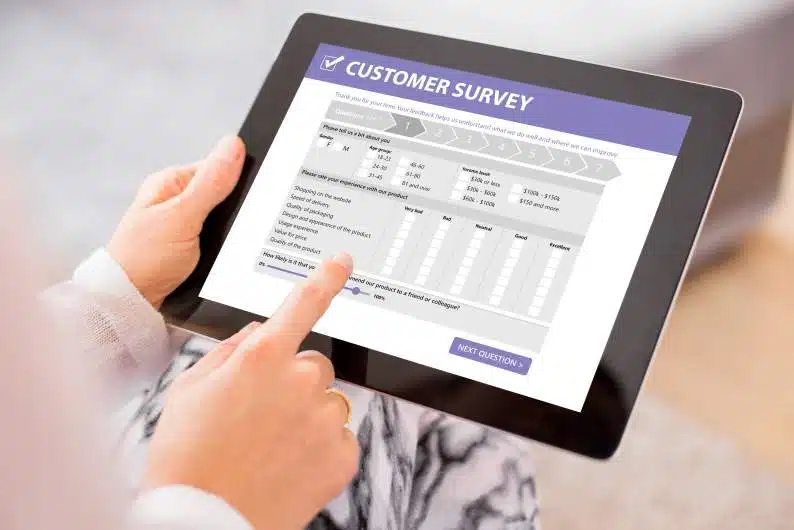Survey translation can be an issue for organizations that are dedicated to customer satisfaction and brand engagement.
Data-centric marketing strategies can rely on surveys as the best way to understand what their customers expect.
A successful survey covers the target market, which does not necessarily speak the same language as the marketing team.
This is where survey translation services come into play. Even for the US market, you might need Spanish survey translation services, Chinese survey translation services, or others.
To get the most out of your survey translation, there are some basic concepts you need to consider from the start, including how to calculate a budget for offering a survey in many languages.
The Nitty-Gritties of Survey Translation
Successful multilingual survey translation relies on various crucial elements such as:
Making Sure Your Copy Is 100% Complete Before Survey Translation
You don’t want to translate your survey into many languages and then realize you have to make changes to the original.
Once written, make sure your survey is approved by technical specialists and proofreaders.
Survey translations are time-consuming, and editing surveys after translation can be tricky, expensive, and can put you behind schedule.
The more survey languages you have, the worse the problem becomes. “Measure twice, cut once” should be your motto.
Carefully Choosing the Right Survey Software
Survey creation software can be classified as either cloud-based SaaS, or on-premise software.
Regardless of which direction you go, make sure you choose survey software that supports a multilingual framework.
From screen instructions to buttons, every text element of the software you use for your surveys should be translatable.
If your current software does not support full survey translation, you probably need to switch to one that does.
Multilingual survey software will have built-in translation management features that simplify survey translation and speed up the process, for example, download and upload tools.
To translate your survey, all you have to do is download the original survey, translate it into the target languages, and upload the translated file(s).
The download file will usually be “PO” file (.po), which works as a standard localization file, or other translatable formats, such as, CSV, XLSX, or XLIFF.
Survey Monkey is a popular survey software that uses download and upload tools to translate your survey into other languages
Once downloaded, give the survey content file to a professional translator or translation company.
The agency will then use its own tools like translation memories, quality control software, spell-check tools, grammar check tools, and so on, to provide high-quality translations.
BeTranslated is well versed and highly experienced when it comes to translating surveys using any export file format.
Their integrated software can make translations smooth, seamless, and efficient. To learn more about the translation process, see What Translators Do and How Translations are Obtained.
Besides Download and Upload, some survey software provides an online translation interface feature that lets translators work directly in the survey software.
If you want to use the online interface, you have to give the translator access to your software, which is something most research specialists are thrilled about.
This also means that translators cannot work in their preferred specialty translation environments.
While these are a few of the disadvantages of using an online translation interface, this tool can also be beneficial to you, as it can help you format translations by seeing them in context.
Protecting Your HTML Formatting
HTML formatting is a primary function of most survey software.
Exported files will contain HTML tags that must be preserved in the translation.
When passing on your survey to a translation agency, make sure you pick an agency that knows how to translate HTML formatted surveys without disturbing the code.
For example, consider the translation of the following phrase with “bold” HTML tags
Which items do you use <strong>regularly</strong>?
The correct translation that preserves the HTML would be
Quels sont les éléments que vous utilisez <strong>régulièrement</strong> ?
An inexperienced translator might translate the “bold” tags and break the code
Quels sont les éléments que vous utilisez <forte>régulièrement</forte> ?
BeTranslated has been in the business for many years, and is extremely adept at HTML Translations. Reach out to us for all your translation-related needs.
Protecting Your Variables
Most surveys comprise questions with dropdowns, multiple choice answers, numeral inputs, and variables, so preserving the formatting of such data is crucial to efficient survey translation.
Variables denote information that can change with every survey response. Hence, the variables have to be preserved, unmodified, and must appear in the right place in translation.
The variable names must not be translated.
Here is an example of a sentence with two variables, :min and :num
You must select :min items. You have only selected :num item(s).
When the survey is answered, this will look like
You must select 3 items. You have only selected 2 item(s)
When this part of the survey is translated in foreign language like French, it should reflect like this, where the variables remain intact
Vous devez sélectionner :min articles. Vous avez sélectionné :num article(s).
If a translator does not recognize these as variables, they may incorrectly translate as shown below, causing the survey to behave incorrectly:
Vous devez sélectionner :minimum articles. Vous avez sélectionné :numéro article(s).
In the correct example, the terms “:min” and “:num” are formatted with a “:” (colon), they remain untranslated, and they are placed in the appropriate place for French grammar.
While considering a translator or agency for survey translation services, ensure that they understand how to handle survey variables.
BeTranslated has a thorough understanding of how variables are handled, and has flawlessly translated surveys into many languages over the years.
Preserve Survey Instruction Codes
Similarly, surveys modify themselves in real time as audiences give their responses. Surveys can change the way they flow by using piping, masking, carry-forward, branching logic, skip logic, and more.
Sometimes, when a customer keys in a negative response on question 1, the survey automatically prompts a follow-up question.
Answering question number 3 might automatically jump you to question number 8.
Sometimes, surveys contain questions wherein the user is asked to choose from a range of items.
For example, if a customer chooses “oats” as their preferred cereal, the next question will probably have something to do with oats.
Programming logic makes all these complexities possible, and programming logic can be easily broken by a translator who does not recognize it for what it is, in the same way the variables were broken in the example above.
To avoid this, good survey software will export the content without exporting survey instruction codes, or will format them in a way that makes them easily identifiable to a knowledgeable translator.
Make survey translations a simple and stress-free process with BeTranslated, who are adept at successfully translating surveys with survey instructions codes, without introducing errors.
Re-Using Already Translated Survey Content
Sometimes, firms and companies have to translate sets of related surveys. There may be instances where some of the repeated content has already been translated and doesn’t need to be translated again.
If this is the case, reach out to agencies or translators who use tools like Translation Memories to keep stock of all your previous translations. These tools save you time, money, and a whole lot of effort.
BeTranslated creates and hosts Translation Memories for all its customers to minimize translation costs and uphold its consistency.
Localizing Your Survey
Localization is a vital aspect of survey translation. Localizing your survey makes it resonate with target audiences, like a particular region, or even a city.
The key to foolproof localization is to ensure that you use native-language translators who actually live in that particular region, as they understand the region’s culture, slang, and language innuendo, therefore translating accordingly.
BeTranslated only uses native-language professional translators who live in the target destination, and who perfectly understand the nuances of the translation.
Using Domain Experts
Localizing technical content-based surveys means that you need to pick translators who not only specialize in target markets, but also specialize in niche domains within a professional capacity.
For example, if your survey revolves around law or medicine, you need a specialist translator who is a lawyer or doctor. This will add an extra edge to your translated surveys, so that they resonate with your target market.
Survey Translation in a Nutshell
Technology has expanded beyond borders, and helped businesses grow and diversify.
If you want your surveys to be successful with multilingual audiences, invest in a strong survey translation service. To get a free, no-obligation quote for all your survey translation needs, contact us today.





